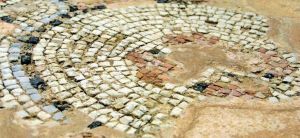Displaying items by tag: archeological sites kefalonia
THE MYCENAEAN TOMBS OF KEFALONIA
The Mycenaean civilization flourished in Greece during the Late Bronze Age (1600-1100 BC). Sailors, shepherds and skilled warriors, in their travels the Mycenaeans brought with them their language and their customs, such as for example that of burying the deceased in large mounds containing well tombs. Tholos tombs were large circular rooms with a high vaulted roof and a straight entrance passageway lined with stone and were usually decorated with gold, silver and bronze. The deceased was often buried with daggers, gilded masks, diadems, armour and bejewelled weapons. These burial chambers are also mentioned in Homer's Iliad and Odyssey!
ROMAN KEFALONIA, THE ARCHEOLOGICAL SITES OF FISKARDO AND SKALA
For us Italians, lucky inhabitants of a country rich in historical finds unique in the world and incredible architectural beauties, the discovery of Roman settlements during an excavation activity does not represent a rare and particularly significant event. Should you therefore visit the Fiskardo cemetery and the Roman villa of Skala during your holidays in Kefalonia? Absolutely yes! Coming across Roman finds abroad, in addition to demonstrating that we are not the first "Italians" to have fallen in love with this enchanting island, reminds us how intertwined the history of Mediterranean countries is and how much these contacts have enriched all the civilizations involved... And if you're traveling with little explorers, this break from the beach is sure to be a great adventure for them!


